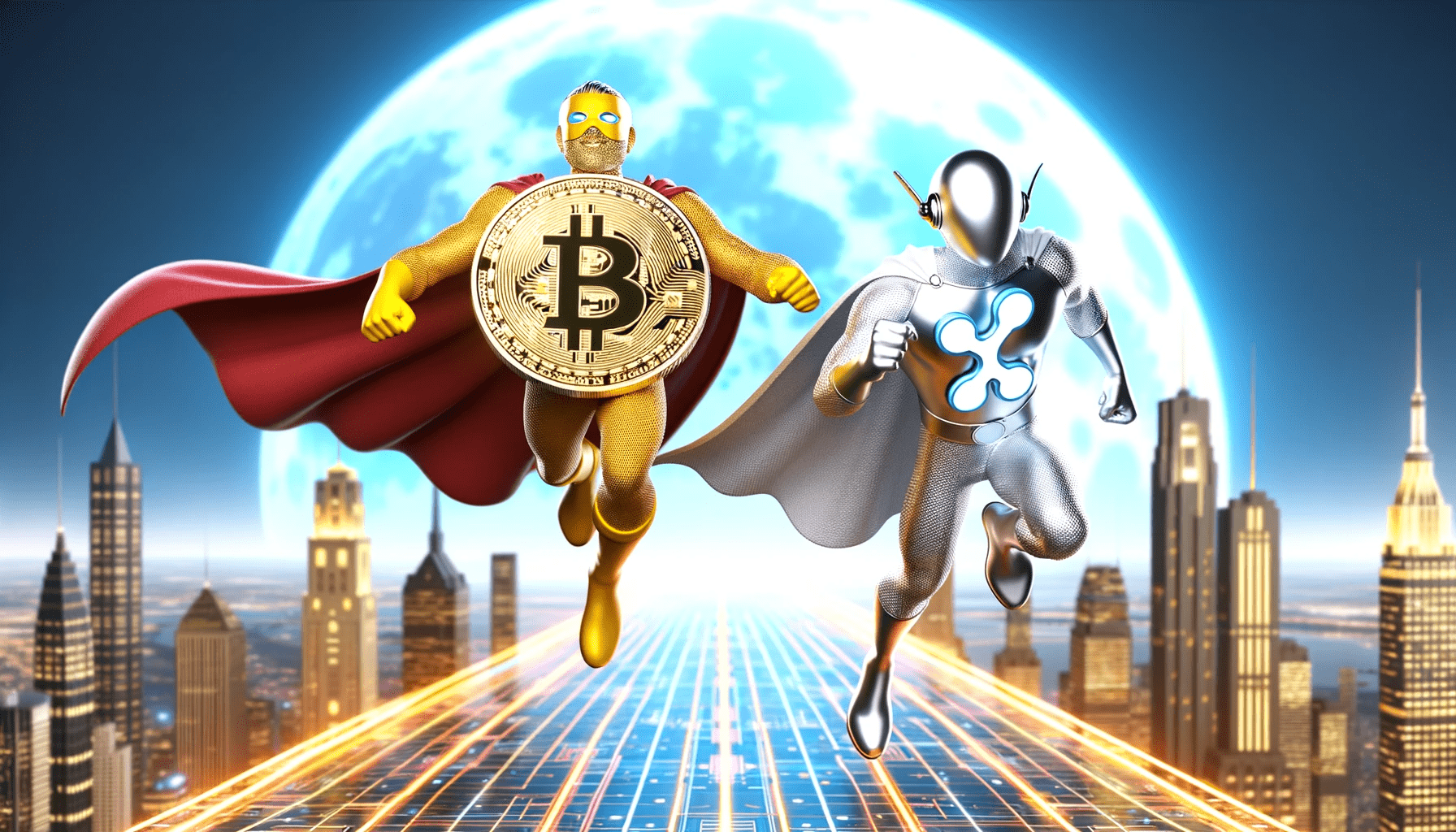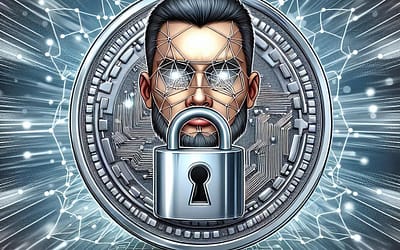In the crazy world of cryptocurrencies, understanding the nature and purpose of different digital assets can be a daunting quest. Especially for newcomers asking is XRP like Bitcoin?, the comparison between Ripple's XRP and Bitcoin often arises. While at a glance they might seem similar, delving deeper uncovers their distinct paths. Let’s explore these cryptocurrencies to furnish a clearer perspective for the novice investor.
Understanding The Founding Principles
Bitcoin emerged in 2009, ushering the world into a new era of decentralized digital currencies. It was created as an alternative to traditional fiat currencies, aiming to be a peer-to-peer electronic cash system devoid of central authority.
Fiat currency is a type of currency that is issued by a government and is not backed by a physical commodity like gold or silver. The value of fiat money is derived from the trust and confidence people have in the government that issues it.
As it's not linked to a physical asset, the government can adjust its supply based on economic needs.
Most modern paper currencies, including the U.S. dollar, the Euro, and other major global currencies, are examples of fiat money.
It's called "fiat" from the Latin term meaning "it shall be", indicating the declared value by the government.
On the flip side, Ripple, the company behind XRP, doesn't share Bitcoin's decentralization ethos. Established in 2012, Ripple aims to improve international money transfers, and XRP serves as a bridge currency in this endeavor. More importantly, the technology behind XRP allows for faster, cheaper, and more secure transfers of funds anywhere in the world, and that's a very big deal in the world of finance, where billions of dollars change hands constantly.
The Technological Framework
Bitcoin operates on a decentralized, open-source blockchain network. Its technology relies on miners to validate transactions through a process known as proof-of-work. This mining activity secures the network but also consumes significant energy.
Miners validate transactions by solving complex mathematical problems. This process, known as mining, involves adding transaction records to Bitcoin's public ledger of past transactions, also known as the blockchain.
The blockchain is used to confirm transactions to the rest of the network as having taken place. Miners pack these transactions into blocks and validate them. The first miner to solve the puzzle gets to place the next block on the blockchain and claim the rewards.
In addition to mining, the miners also ensure the security of the Bitcoin network. They perform a series of checks on transactions before they add them to the blockchain. These checks include making sure the same bitcoin hasn't been spent twice by the same user (a double spend), and verifying the digital signature attached to each transaction to ensure it matches the bitcoin being spent. Only transactions that are successfully validated by miners are included in the blockchain. This process helps to maintain the integrity and secure nature of Bitcoin transactions.
XRP operates on a proprietary digital payment protocol known as Ripple Protocol Consensus Algorithm (RPCA), which doesn't require mining. This leads to faster transaction processing and lower energy consumption compared to Bitcoin.
The Ripple Protocol Consensus Algorithm (RPCA) is used by Ripple's digital payment protocol for operating its cryptocurrency, XRP.
Unlike Bitcoin's Proof of Work (PoW) or Ethereum's Proof of Stake (PoS), Ripple uses its unique consensus to secure the network and validate transactions.
The protocol takes place in rounds and involves various servers or nodes comparing their current versions of the transaction record, known as ledgers.
A consensus is reached when a supermajority of nodes agree on a set of transactions to append to the ledger.
If the consensus is not reached, the process starts another round. This algorithm ensures speed, security, and reliability in the system while preventing double-spending and other types of fraud. It achieves this without the need for time and energy-consuming mining, making it a more sustainable option for maintaining a cryptocurrency network.
Token Supply Dynamics

The supply mechanics of Bitcoin and XRP are markedly different. Bitcoin has a fixed supply cap of 21 million coins, which creates a deflationary effect over time as fewer coins are mined.
XRP, on the other hand, has a total supply of 100 billion coins pre-mined, meaning all coins are already in existence. This contrasts with Bitcoin's mining process, where new coins are created as rewards for miners.
Bitcoin was crafted with the idea of providing a decentralized currency free from governmental control. It's often likened to “digital gold” due to its store of value characteristic.
XRP aims to facilitate cross-border transactions for banks and payment providers, acting as a bridge between different fiat currencies, thus enabling money to be transferred and settled in a more efficient way.
Market Perception and Adoption
Bitcoin, being the pioneer, enjoys widespread recognition and trust among investors and the general populace. Its decentralization and fixed supply often attract investors looking for a hedge against inflation. Early investors who stayed in the market experienced massive returns which made many extremely wealthy. Bitcoin still dominates the market, and what ever price swings occur, it greatly affects the rest of the cryptocurrencies.
XRP, however, has a more niche appeal, targeting financial institutions and banks. Its affiliation with the company Ripple also subjects it to different market perceptions and regulatory scrutiny.
Unveiling The Case Background
Initiated in December 2020, the SEC accused Ripple and its executives of raising over $1.3 billion through an unregistered digital asset securities offering, specifically targeting the sales of Ripple's native token, XRP. The crux hinged on whether XRP itself was a security under federal laws or if the transactions involving XRP were securities transactions. This required a dive into the Howey Test—a test established to determine whether certain transactions qualify as "investment contracts" under the Securities Act.
On July 13, 2023, a monumental ruling came from the U.S. District Court for the Southern District of New York. The court, examining summary judgment motions from both parties, delivered a split decision. It ruled in favor of Ripple for three out of the four transaction types at issue, stating these transactions did not involve investment contract securities, and crucially, that XRP was not a security in itself. This decision essentially rejected the SEC's argument that the token was a security, providing a level of regulatory clarity on XRP's status.
The split decision of the court acknowledged that not all transactions involving XRP were securities transactions. It differentiated between sales of XRP directly to institutional investors, algorithmic sales of XRP on digital asset trading platforms, XRP distributions to Ripple employees and third parties, and sales of XRP by Ripple executives on various digital asset trading platforms. Among these, the court found that only the sales of XRP to institutional investors were securities transactions, based on the evidence provided.
This case's outcomes are significant for the broader crypto community. Firstly, the ruling affirms that not all tokens are securities, challenging the SEC's long-standing position. Secondly, it underscores the necessity for a nuanced understanding of different digital assets and their transactions, nudging the regulatory framework toward a more detailed and nuanced approach.
The journey of Ripple through the courts unveils a scenario where regulatory frameworks are put to the test by the burgeoning world of digital assets. This case not only marks a win for Ripple but sets a precedent that could influence the regulatory landscape for cryptocurrencies in the United States. While the SEC suffered a setback, Ripple's triumph in asserting XRP's non-security status brings about a new dawn of regulatory clarity, a critical step forward for the crypto industry.
So is XRP like Bitcoin? While both Bitcoin and XRP serve as digital assets within the cryptocurrency arena, their differences are pronounced. From their founding ideologies to technological frameworks and market adoption, each serves unique purposes within the crypto ecosystem. For a new investor, understanding these distinctions is crucial in making informed decisions in the crypto voyage.
Matt is the founder of TechMalak. When he's not buried face-deep in the crypto charts you can find him tinkering with the latest tech gadgets and A. I tools. He's a crypto investor and entrepreneur. He uses a mixture of A.I and human thought and input into all his articles on TechMalak, further merging man with machine.





